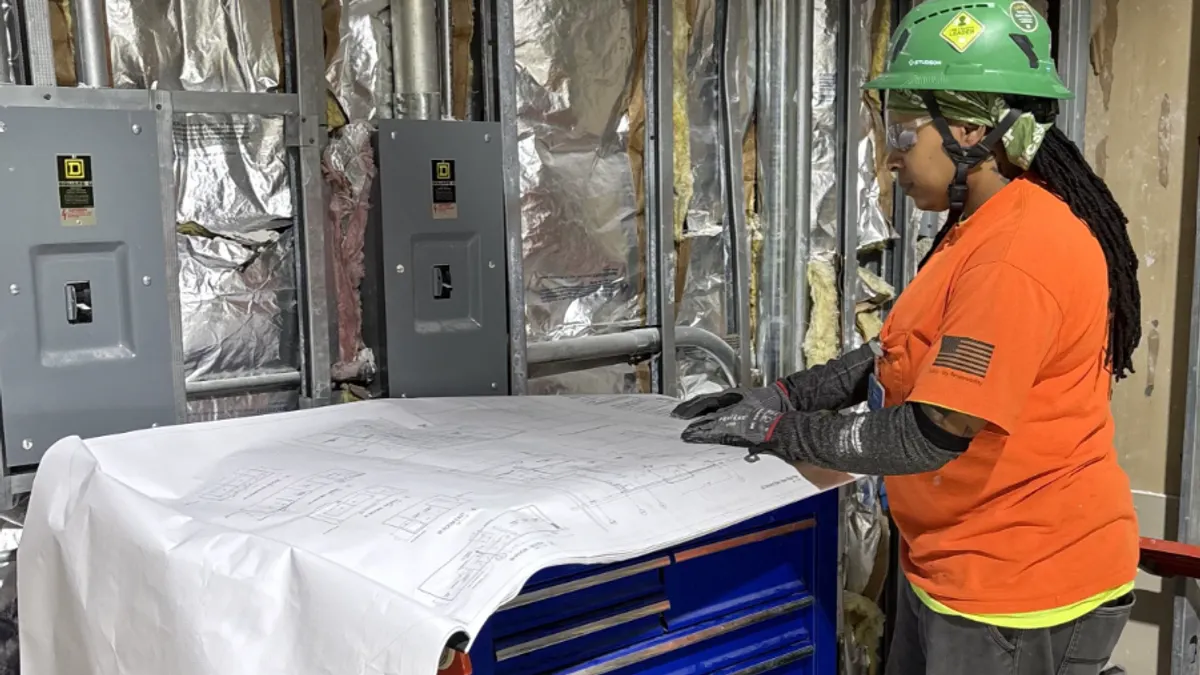This feature is a part of "The Dotted Line" series, which takes an in-depth look at the complex legal landscape of the construction industry. To view the entire series, click here.
Architects often see their role as being the "king of the hill" when it comes to projects, with duties and responsibilities woven into every phase from conceptual design to periodic reviews of the physical work. Depending on what form of contract is used, the architect is also the final arbiter of a wide variety of project disputes. And, for the most part, that framework remains unchanged.
However, some say the architect’s role — on the job and at the drawing board — has been diminished over the last several years, with more owners opting for their own staff, third-party consultants or contractors to take on certain design and other responsibilities. While most experts agree on the reason behind that shift, there is some disagreement over the effects of architects' changing roles.
How the architect's role is changing — and why
The rise of collaborative contracting methods like design-build and integrated project delivery has certainly created an opening for construction companies to add design services to their menu of offerings, but it's the potential for cost and time savings that is the main driver, according to experts.
While there has been pullback on the part of some owners from the traditional function of the architect, there hasn’t been an organized effort to do so, according to Jack Kannry, partner and chair of the construction law group at Warshaw Burstein in New York City.
"I don’t see it as an intentional plot to diminish the roles of architects and engineers for any other reason than economics," he said, adding that owners sometimes want to contract with third-party consultants or hire an owner’s representative to do intermittent reviews in order to employ a set of "extra eyes" on a project.
"I don’t see it as an intentional plot to diminish the roles of architects and engineers for any other reason than economics."

Jack Kannry
Partner and chair of the construction law group at Warshaw Burstein
Nevertheless, Kannry said it’s the owners' prerogative to engage an architect in any way they see fit, as long as the architect performs under the applicable local professional licensing laws. The architect would also have agreed in advance to the level of creative or other input when he entered into a contract with the owner.
"The whole thing has got to be handled contractually," he said. The owner may decide to handle the lion’s share of allowed design responsibilities in-house, Kannry said, and as long as the architect makes sure they are contractually insulated from those duties, there shouldn’t be a problem of liability.
The importance of a contractual agreement
Justin Mihalik, president of the American Institute of Architects New Jersey chapter, said he believes it hasn’t been the liability that’s changed over the years but rather the roles and responsibilities of the architect. "There shouldn’t be any reason that liability should keep (architects) out of the picture," he said.
Kannry said it riskier when the architect assumes a role that could be considered "an act akin to privity." Normally, architects have little or no legal liability to contractors or any other party on a project if the contract is directly with the owner and no one else.
However, if the architects put themselves in control of certain aspects of the job, they can expand their project liability beyond the scope of the contract.
Conversely, Kannry said, contractors can also be required to secure errors and omissions insurance coverage beyond what the project’s architects and engineers carry when they’ve taken on design duties. However, he said those are usually in design-build situations in which there is "a blurriness where design leaves off and contracting begins."
The effects of reducing an architect's role
Nevertheless, Mihalik said that when the architect is eliminated from key decision-making in the construction process, there’s more lost than just a few responsibilities. "What’s lost is a vision of what the design can be," he said, as well as input about materials and processes that can best work with the chosen design and budget.
Many larger contractors, Mihalik said, have developed their own design departments, some hiring staff architects to take over preconstruction duties, particularly when using the design-build delivery method. He said he believes that monetary and schedule considerations are too often "shoehorned" into the design, rather than the contractor refining the architect’s ideas.
"Somebody has to be able to understand the original vision and challenges as they move into the project."

Justin Mihalik
President of the American Institute of Architects New Jersey chapter
Then, when contractor-created schematics are complete, they are handed over to the architect to create the construction documents necessary for permitting. "The architect of record may not be involved in the predesign at all, and now they’re picking up the project from that point," Mihalik said.
In those situations, what was once the key position of architect is reduced almost to the level of a drafting service, according to Mihalik. "Problem solving for the entire process occurs at the front end," he said, and each part of the project is like one piece of a puzzle. "The integrated method is a better way to go. There should be a constant architect throughout the entire project. Somebody has to be able to understand the original vision and challenges as they move into the project."
A construction manager's perspective
Lenord Cubellis, senior vice president of Construction Management & Builders Inc. in Danvers, MA, is on board with much of what Mihalik believes about an architect's involvement in a project.
Cubellis said that when cm&b and an architect are coordinating on a design, the company does not typically bring that architect in under its own contract but prefers it be with the owner. "Our job is to provide an early conceptual budget and to be able to provide the owner and architect with information as they go through the design process," he said.
However, Cubellis has a different take on the schematic process. "The better (service) that we can provide at schematic design and design development, the better the owner is able to make a decision," he said. "They get the best of both (the architect and contractor's) work." Although the owner pays for preconstruction services, "it’s not how we generate profit, it’s how we win work," Cubellis said. An architect would need to charge the owner a substantially higher amount for those same services, he added.
As far as the overall industry is concerned, Cubellis noted that there has been a shift of duties from architect to independent consultants, but he said the extent of that change depends on the sector. The architect’s responsibility on residential projects hasn’t changed significantly, but has morphed somewhat in the commercial sector, "depending on who your client is and their sophistication," he said.
Some of that is just a sign of the times, he said, but when it comes to preconstruction services, contractors are simply better situated to provide a more accurate budget at the beginning of the design process, a point with which Mihalik agrees. "I don’t know too many architects who would not want a construction manager involved early on," he said.
Owners still need an architect to give them a unique design, Cubellis noted. They’re just trying to figure out where to get the best information.
The Dotted Line series is brought to you by AIA Contract Documents®, a recognized leader in design and construction contracts. To learn more about their 200+ contracts, and to access free resources, visit their website here. AIA Contract Documents has no influence over Construction Dive's coverage within the articles, and content does not reflect the views or opinions of The American Institute of Architects, AIA Contract Documents or its employees.




















